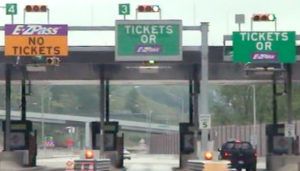Widely acknowledged as being the USA’s first ‘super-highway’, the Pennsylvania Turnpike is celebrating 80 years of operations in October this year with a dual-purpose upgrade that will benefit motorists, while creating fibre and conduit leasing options along the well-travelled route.
The Pennsylvania Turnpike Commission (PTC) has selected international employee-owned engineering, procurement, consulting and construction company Black & Veatch (B&V) to install a new high-speed fibre optic network along more than 200 miles (322km) of the Pennsylvania Turnpike (PA Turnpike). When completed, the network will boost connectivity between the PTC’s administrative buildings and support All-Electronic Tolling (AET), and Intelligent Transportation Systems (ITS) for safety and mobility along this heavily travelled highway. The new fibre network will also prepare the Turnpike to support emerging technologies for smart roadways and Connected and Autonomous Vehicles (CAVs). Originally opened in 1940, the Turnpike established the national standard for design and construction more than 16 years before the first US Interstate highway.
B&V was awarded two contracts to develop the first and second phases of the PA Turnpike’s network upgrade, which will also provide the PTC with revenue-generating opportunities by installing extra fibre and conduits for commercialisation that it can lease to outside organisations. The first phase involves a US$44.7m fibre optic design-build stretching from Harrisburg to the Delaware River Bridge. The US$49.7m second phase of the upgrade is planned for PTC’s Northeastern Extension, connecting Philadelphia, Allentown and Scranton. These projects will provide high-speed data communications at the roadway where it is needed, supporting the PTC’s cashless Open Road Tolling (ORT) initiative using gantries above the roadway, and the agency’s ITS program, positioning the Turnpike to meet its communication needs of the future.
Led by Black & Veatch Construction Inc., fibre will be installed using a process known as micro-trenching, which overcomes the challenges of the Turnpike’s often rocky topography by installing the line within the roadway’s shoulder. The process allows for a quicker installation and helps minimise impacts to Turnpike customers. The upgraded network will meet the PTC’s connectivity needs for its office structures, maintenance sheds, service plazas, traffic cameras, and all roadside Internet of Things (IoT) and ITS equipment. The network’s high capacity will also create space the PTC plans to lease to outside organisations, such as cellular network providers, or other groups seeking high-speed broadband, proving that such network infrastructure can deliver parallel benefits that reduce the impacts of initial infrastructure investments. Cities and governing agencies are increasingly seeking creative, dual-purpose projects to answer the challenges posed by capital costs.
“Amping up data capabilities on the PA Turnpike is necessary to prepare for AET and intelligent transportation and CAV systems,” said Neil Raup, manager of total reconstruction programs for the PA Turnpike. “Fibre optic infrastructure is an essential element.”
Paul Pishal, sales director in B&V’s Telecom Division, commented, “The PA Turnpike Commission sought a qualified partner that could bring an innovative, viable and affordable solution. Our engineering team was able to submit a design that was a perfect fit for both Pennsylvania’s unique topography as well as the PTC’s goals for a high-speed data network to ensure robust connectivity across the Turnpike.”





